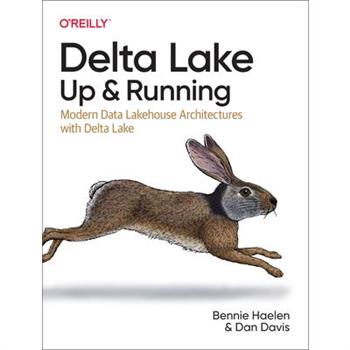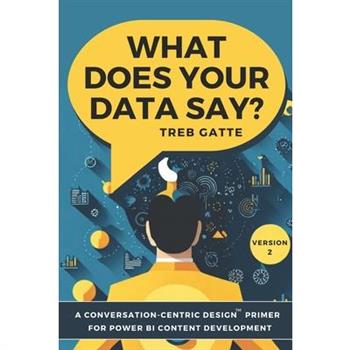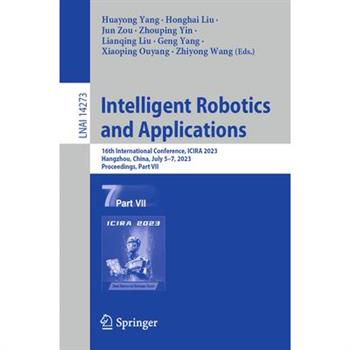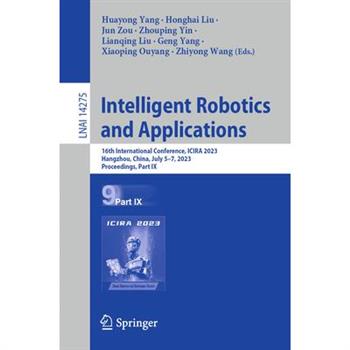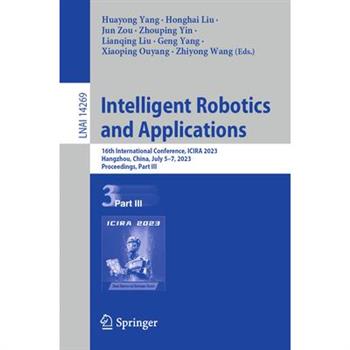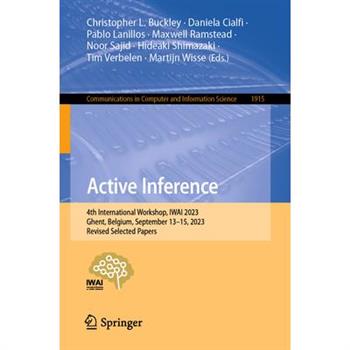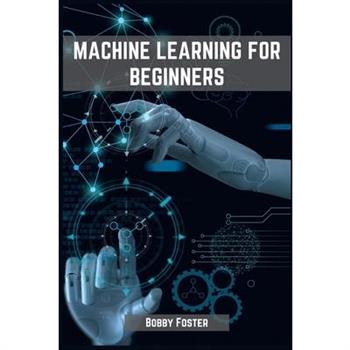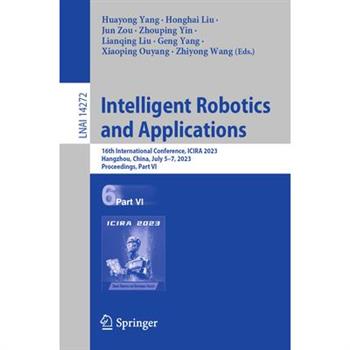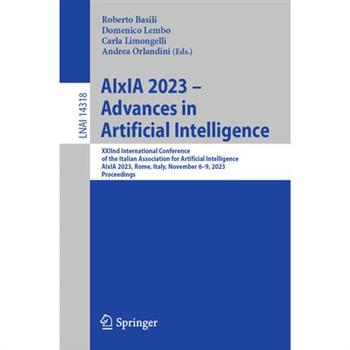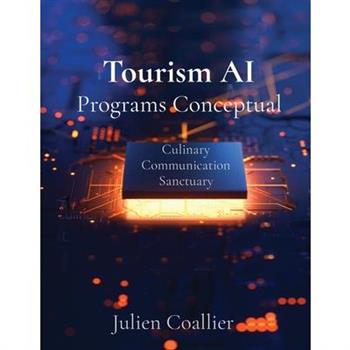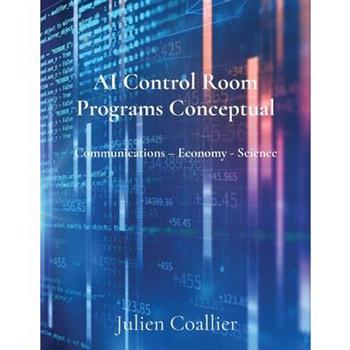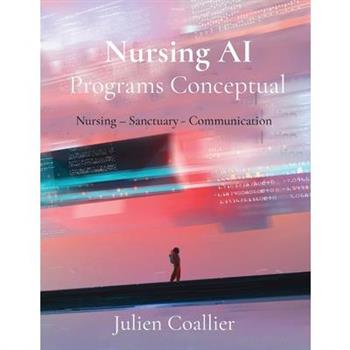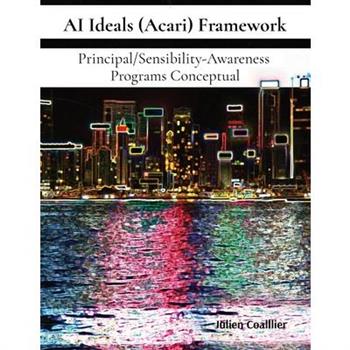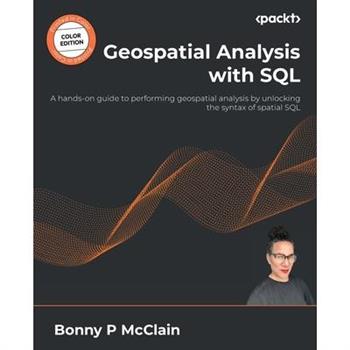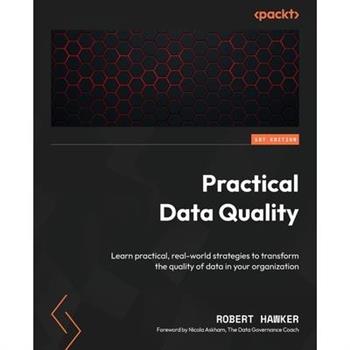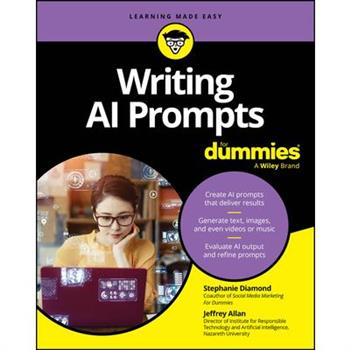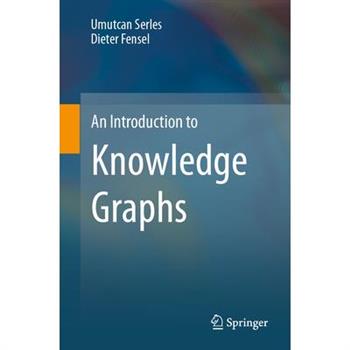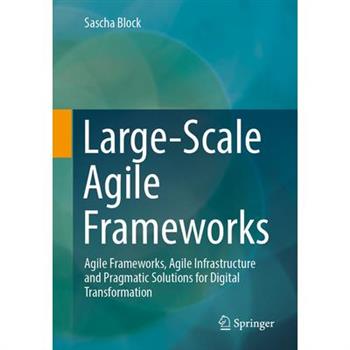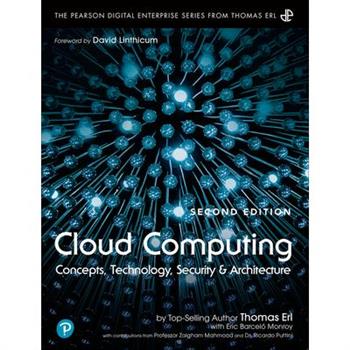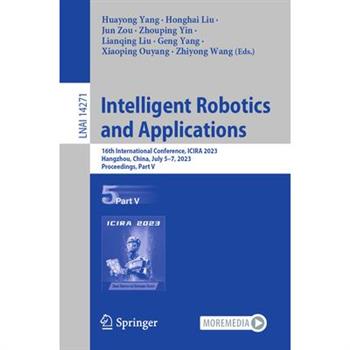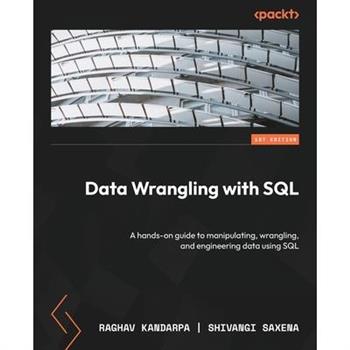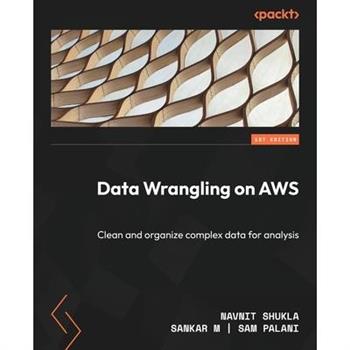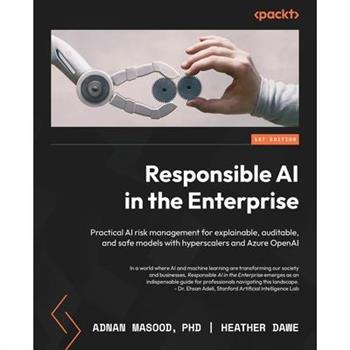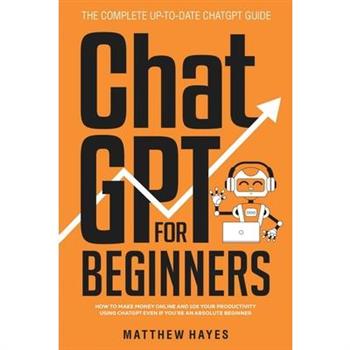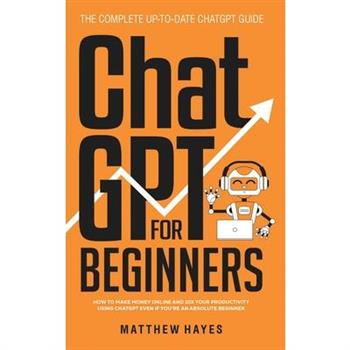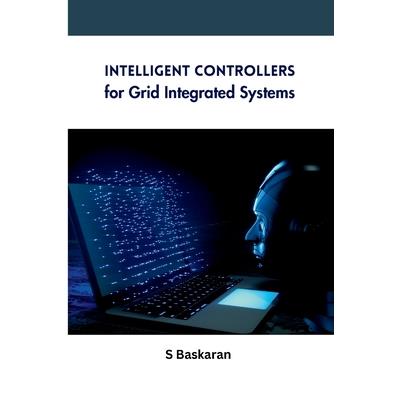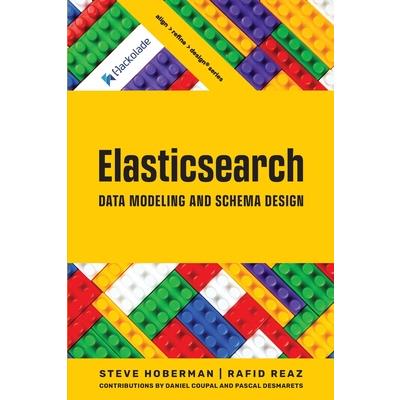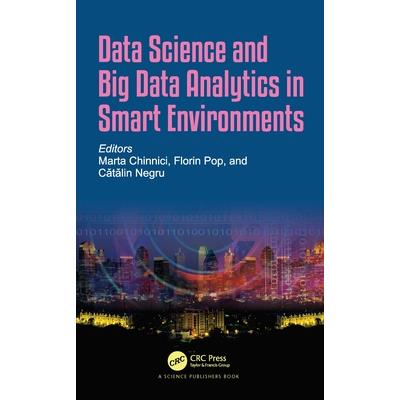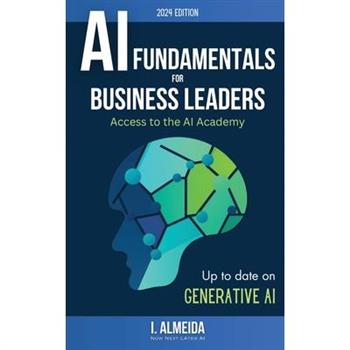Delta Lake: Up and Running
With the rapid growth of big data and AI, organizations are quickly building data products and solutions in an ad-hoc manner. But as these data organizations mature, it's apparent that their analysis and machine learning models are only as reliable as the data they're built upon. The solution? Delta Lake, an open-source format that enables building a lakehouse architecture on top of existing storage systems such as S3, ADLS, and GCS. In this practical book, author Bennie Haelen shows data engineers, data scientists, and data analysts how to get Delta Lake and its unique features up and running. The ultimate goal of building data pipelines and applications is to query processed data and gain insights from it. You'll learn how the choice of storage solution determines the robustness and performance of the data pipeline, from raw data to insights. With this book, you will: Use modern data management and data engineering techniques Understand how ACID transactions bring reliability to data lakes at scale Run streaming and batch jobs against your data lake concurrently Execute update, delete, and merge commands against your data lake Use time travel to roll back and examine previous versions of your data Build a streaming data quality pipeline following the medallion architecture
What Does Your Data Say?
Are you struggling to create powerful reports that your users will use to make better business decisions? Are you tired of being asked whether the report you delivered can be exported to Excel? If so, this book is for you. In this book, you will learn how to: Approach your design using our framework, ensuring users are clear on what's being developedDefine the key questions and goals for your business intelligence projectChoose the best visualizations for different types of questionsAlign your reports and dashboards with your business needs and objectivesThis book is suitable for anyone who wants to learn how to design effective business intelligence content, whether you are a beginner or an advanced user. You will find practical examples throughout the book to help you create compelling reports and dashboards.
Intelligent Robotics and Applications
The 9-volume set LNAI 14267-14275 constitutes the proceedings of the 16th International Conference on Intelligent Robotics and Applications, ICIRA 2023, which took place in Hangzhou, China, during July 5-7, 2023.The 413 papers included in these proceedings were carefully reviewed and selected from 630 submissions. They were organized in topical sections as follows: Part I: Human-Centric Technologies for Seamless Human-Robot Collaboration; Multimodal Collaborative Perception and Fusion; Intelligent Robot Perception in Unknown Environments; Vision-Based Human Robot Interaction and Application.Part II: Vision-Based Human Robot Interaction and Application; Reliable AI on Machine Human Reactions; Wearable Sensors and Robots; Wearable Robots for Assistance, Augmentation and Rehabilitation of Human Movements; Perception and Manipulation of Dexterous Hand for Humanoid Robot.Part III: Perception and Manipulation of Dexterous Hand for Humanoid Robot; Medical Imaging for Biomedical Robotics; Advanced Underwater Robot Technologies; Innovative Design and Performance Evaluation of Robot Mechanisms; Evaluation of Wearable Robots for Assistance and Rehabilitation; 3D Printing Soft Robots.Part IV: 3D Printing Soft Robots; Dielectric Elastomer Actuators for Soft Robotics; Human-like Locomotion and Manipulation; Pattern Recognition and Machine Learning for Smart Robots.Part V: Pattern Recognition and Machine Learning for Smart Robots; Robotic Tactile Sensation, Perception, and Applications; Advanced Sensing and Control Technology for Human-Robot Interaction; Knowledge-Based Robot Decision-Making and Manipulation; Design and Control of Legged Robots.Part VI: Design and Control of Legged Robots; Robots in Tunnelling and Underground Space; Robotic Machining of Complex Components; Clinically Oriented Design in Robotic Surgery and Rehabilitation; Visual and Visual-Tactile Perception for Robotics.Part VII: Visual and Visual-Tactile Perception for Robotics; Perception, Interaction, and Control of Wearable Robots; Marine Robotics and Applications; Multi-Robot Systems for Real World Applications; Physical and Neurological Human-Robot Interaction.Part VIII: Physical and Neurological Human-Robot Interaction; Advanced Motion Control Technologies for Mobile Robots; Intelligent Inspection Robotics; Robotics in Sustainable Manufacturing for Carbon Neutrality; Innovative Design and Performance Evaluation of Robot Mechanisms.Part IX: Innovative Design and Performance Evaluation of Robot Mechanisms; Cutting-Edge Research in Robotics.
Intelligent Robotics and Applications
The 9-volume set LNAI 14267-14275 constitutes the proceedings of the 16th International Conference on Intelligent Robotics and Applications, ICIRA 2023, which took place in Hangzhou, China, during July 5-7, 2023.The 413 papers included in these proceedings were carefully reviewed and selected from 630 submissions. They were organized in topical sections as follows: Part I: Human-Centric Technologies for Seamless Human-Robot Collaboration; Multimodal Collaborative Perception and Fusion; Intelligent Robot Perception in Unknown Environments; Vision-Based Human Robot Interaction and Application.Part II: Vision-Based Human Robot Interaction and Application; Reliable AI on Machine Human Reactions; Wearable Sensors and Robots; Wearable Robots for Assistance, Augmentation and Rehabilitation of Human Movements; Perception and Manipulation of Dexterous Hand for Humanoid Robot.Part III: Perception and Manipulation of DexterousHand for Humanoid Robot; Medical Imaging for Biomedical Robotics; Advanced Underwater Robot Technologies; Innovative Design and Performance Evaluation of Robot Mechanisms; Evaluation of Wearable Robots for Assistance and Rehabilitation; 3D Printing Soft Robots.Part IV: 3D Printing Soft Robots; Dielectric Elastomer Actuators for Soft Robotics; Human-like Locomotion and Manipulation; Pattern Recognition and Machine Learning for Smart Robots.Part V: Pattern Recognition and Machine Learning for Smart Robots; Robotic Tactile Sensation, Perception, and Applications; Advanced Sensing and Control Technology for Human-Robot Interaction; Knowledge-Based Robot Decision-Making and Manipulation; Design and Control of Legged Robots.Part VI: Design and Control of Legged Robots; Robots in Tunnelling and Underground Space; Robotic Machining of Complex Components; Clinically Oriented Design inRobotic Surgery and Rehabilitation; Visual and Visual-Tactile Perception for Robotics.Part VII: Visual and Visual-Tactile Perception for Robotics; Perception, Interaction, and Control of Wearable Robots; Marine Robotics and Applications; Multi-Robot Systems for Real World Applications; Physical and Neurological Human-Robot Interaction.Part VIII: Physical and Neurological Human-Robot Interaction; Advanced Motion Control Technologies for Mobile Robots; Intelligent Inspection Robotics; Robotics in Sustainable Manufacturing for Carbon Neutrality; Innovative Design and Performance Evaluation of Robot Mechanisms.Part IX: Innovative Design and Performance Evaluation of Robot Mechanisms; Cutting-Edge Research in Robotics.
Intelligent Robotics and Applications
The 9-volume set LNAI 14267-14275 constitutes the proceedings of the 16th International Conference on Intelligent Robotics and Applications, ICIRA 2023, which took place in Hangzhou, China, during July 5-7, 2023.The 413 papers included in these proceedings were carefully reviewed and selected from 630 submissions. They were organized in topical sections as follows: Part I: Human-Centric Technologies for Seamless Human-Robot Collaboration; Multimodal Collaborative Perception and Fusion; Intelligent Robot Perception in Unknown Environments; Vision-Based Human Robot Interaction and Application.Part II: Vision-Based Human Robot Interaction and Application; Reliable AI on Machine Human Reactions; Wearable Sensors and Robots; Wearable Robots for Assistance, Augmentation and Rehabilitation of Human Movements; Perception and Manipulation of Dexterous Hand for Humanoid Robot.Part III: Perception and Manipulation of DexterousHand for Humanoid Robot; Medical Imaging for Biomedical Robotics; Advanced Underwater Robot Technologies; Innovative Design and Performance Evaluation of Robot Mechanisms; Evaluation of Wearable Robots for Assistance and Rehabilitation; 3D Printing Soft Robots.Part IV: 3D Printing Soft Robots; Dielectric Elastomer Actuators for Soft Robotics; Human-like Locomotion and Manipulation; Pattern Recognition and Machine Learning for Smart Robots.Part V: Pattern Recognition and Machine Learning for Smart Robots; Robotic Tactile Sensation, Perception, and Applications; Advanced Sensing and Control Technology for Human-Robot Interaction; Knowledge-Based Robot Decision-Making and Manipulation; Design and Control of Legged Robots.Part VI: Design and Control of Legged Robots; Robots in Tunnelling and Underground Space; Robotic Machining of Complex Components; Clinically Oriented Design inRobotic Surgery and Rehabilitation; Visual and Visual-Tactile Perception for Robotics.Part VII: Visual and Visual-Tactile Perception for Robotics; Perception, Interaction, and Control of Wearable Robots; Marine Robotics and Applications; Multi-Robot Systems for Real World Applications; Physical and Neurological Human-Robot Interaction.Part VIII: Physical and Neurological Human-Robot Interaction; Advanced Motion Control Technologies for Mobile Robots; Intelligent Inspection Robotics; Robotics in Sustainable Manufacturing for Carbon Neutrality; Innovative Design and Performance Evaluation of Robot Mechanisms.Part IX: Innovative Design and Performance Evaluation of Robot Mechanisms; Cutting-Edge Research in Robotics.
Active Inference
This volume constitutes the papers of the 4th International Workshop on Active Inference, IWAI 2023, held in Ghent, Belgium on September 2023.The 17 full papers included in this book were carefully reviewed and selected from 34 submissions. They were organized in topical sections as follows: active inference and robotics; decision-making and control; active inference and psychology; from theory to implementation; learning representations for active inference; and theory of learning and inference.
Intelligent Robotics and Applications
The 9-volume set LNAI 14267-14275 constitutes the proceedings of the 16th International Conference on Intelligent Robotics and Applications, ICIRA 2023, which took place in Hangzhou, China, during July 5-7, 2023. The 413 papers included in these proceedings were carefully reviewed and selected from 630 submissions. They were organized in topical sections as follows: Part I: Human-Centric Technologies for Seamless Human-Robot Collaboration; Multimodal Collaborative Perception and Fusion; Intelligent Robot Perception in Unknown Environments; Vision-Based Human Robot Interaction and Application. Part II: Vision-Based Human Robot Interaction and Application; Reliable AI on Machine Human Reactions; Wearable Sensors and Robots; Wearable Robots for Assistance, Augmentation and Rehabilitation of Human Movements; Perception and Manipulation of Dexterous Hand for Humanoid Robot. Part III: Perception and Manipulation ofDexterous Hand for Humanoid Robot; Medical Imaging for Biomedical Robotics; Advanced Underwater Robot Technologies; Innovative Design and Performance Evaluation of Robot Mechanisms; Evaluation of Wearable Robots for Assistance and Rehabilitation; 3D Printing Soft Robots. Part IV: 3D Printing Soft Robots; Dielectric Elastomer Actuators for Soft Robotics; Human-like Locomotion and Manipulation; Pattern Recognition and Machine Learning for Smart Robots. Part V: Pattern Recognition and Machine Learning for Smart Robots; Robotic Tactile Sensation, Perception, and Applications; Advanced Sensing and Control Technology for Human-Robot Interaction; Knowledge-Based Robot Decision-Making and Manipulation; Design and Control of Legged Robots. Part VI: Design and Control of Legged Robots; Robots in Tunnelling and Underground Space; Robotic Machining of Complex Components; Clinically Oriented Design in Robotic Surgery and Rehabilitation; Visual and Visual-Tactile Perception for Robotics. Part VII: Visual and Visual-Tactile Perception for Robotics; Perception, Interaction, and Control of Wearable Robots; Marine Robotics and Applications; Multi-Robot Systems for Real World Applications; Physical and Neurological Human-Robot Interaction. Part VIII: Physical and Neurological Human-Robot Interaction; Advanced Motion Control Technologies for Mobile Robots; Intelligent Inspection Robotics; Robotics in Sustainable Manufacturing for Carbon Neutrality; Innovative Design and Performance Evaluation of Robot Mechanisms. Part IX: Innovative Design and Performance Evaluation of Robot Mechanisms; Cutting-Edge Research in Robotics.
Machines Learning for Beginners
"Machines Learning for Beginners: A Beginner's Guide to the World of Machine Learning" is your essential handbook for stepping into the realm of machine learning with confidence. This beginner-friendly book provides a solid foundation in machine learning concepts, making complex ideas accessible to anyone eager to explore this cutting-edge field.Inside this introductory guide, you'll uncover: Machine Learning Fundamentals: A clear and concise introduction to the core principles and terminology of machine learning.Types of Machine Learning: An exploration of supervised, unsupervised, and reinforcement learning, along with their real-world applications.Algorithms Demystified: Insights into popular machine learning algorithms like linear regression, decision trees, and neural networks, explained in plain language.Data Preparation: How to collect, clean, and preprocess data to make it suitable for machine learning models.Model Building: Step-by-step guidance on building, training, and evaluating machine learning models to solve practical problems.Feature Engineering: Techniques for selecting and engineering relevant features to improve model performance.Overfitting and Bias: Understanding and addressing common challenges such as overfitting and bias in machine learning.Hands-On Exercises: Practical exercises and projects to apply your newfound knowledge and reinforce your skills.Real-World Applications: Case studies that showcase how machine learning is used in fields like healthcare, finance, and natural language processing.Getting Started: Tips on setting up your development environment and further resources for deeper learning.Whether you're a student, a professional exploring career opportunities, or simply curious about the potential of machine learning, this guide provides a friendly and comprehensive introduction. Start your journey into the fascinating world of machine learning today and equip yourself with the skills to shape the future through data-driven insights.Top of FormBottom of Form
Intelligent Robotics and Applications
The 9-volume set LNAI 14267-14275 constitutes the proceedings of the 16th International Conference on Intelligent Robotics and Applications, ICIRA 2023, which took place in Hangzhou, China, during July 5-7, 2023.The 413 papers included in these proceedings were carefully reviewed and selected from 630 submissions. They were organized in topical sections as follows: Part I: Human-Centric Technologies for Seamless Human-Robot Collaboration; Multimodal Collaborative Perception and Fusion; Intelligent Robot Perception in Unknown Environments; Vision-Based Human Robot Interaction and Application.Part II: Vision-Based Human Robot Interaction and Application; Reliable AI on Machine Human Reactions; Wearable Sensors and Robots; Wearable Robots for Assistance, Augmentation and Rehabilitation of Human Movements; Perception and Manipulation of Dexterous Hand for Humanoid Robot.Part III: Perception and Manipulation of Dexterous Hand for Humanoid Robot; Medical Imaging for Biomedical Robotics; Advanced Underwater Robot Technologies; Innovative Design and Performance Evaluation of Robot Mechanisms; Evaluation of Wearable Robots for Assistance and Rehabilitation; 3D Printing Soft Robots.Part IV: 3D Printing Soft Robots; Dielectric Elastomer Actuators for Soft Robotics; Human-like Locomotion and Manipulation; Pattern Recognition and Machine Learning for Smart Robots.Part V: Pattern Recognition and Machine Learning for Smart Robots; Robotic Tactile Sensation, Perception, and Applications; Advanced Sensing and Control Technology for Human-Robot Interaction; Knowledge-Based Robot Decision-Making and Manipulation; Design and Control of Legged Robots.Part VI: Design and Control of Legged Robots; Robots in Tunnelling and Underground Space; Robotic Machining of Complex Components; Clinically Oriented Design in Robotic Surgery and Rehabilitation; Visual and Visual-Tactile Perception for Robotics.Part VII: Visual and Visual-Tactile Perception for Robotics; Perception, Interaction, and Control of Wearable Robots; Marine Robotics and Applications; Multi-Robot Systems for Real World Applications; Physical and Neurological Human-Robot Interaction.Part VIII: Physical and Neurological Human-Robot Interaction; Advanced Motion Control Technologies for Mobile Robots; Intelligent Inspection Robotics; Robotics in Sustainable Manufacturing for Carbon Neutrality; Innovative Design and Performance Evaluation of Robot Mechanisms.Part IX: Innovative Design and Performance Evaluation of Robot Mechanisms; Cutting-Edge Research in Robotics.
Aixia 2023 - Advances in Artificial Intelligence
This book constitutes the refereed proceedings of the XXIInd International Conference on AIxIA 2023 - Advances in Artificial Intelligence, AIxIA 2023, held in Rome, Italy, during November 6-10, 2023.The 33 full papers included in this book were carefully reviewed and selected from 53 submissions. They were organized in topical sections as follows: Argumentation and Logic Programming, Natural Language Processing, Machine Learning, Hybrid AI and Applications of AI.
Tourism AI Programs Conceptual
Contents have been created by stabilizing into entry a diverse amount of intelligence forming core, to which was/is able to process entire categories into conformity to structural powers. Therein, the control room (communications), being together in template form representative of (most) known/classic subject matter, binding: sanctuary as resources/reference, and culinary as references/resources.By converting contents into applicability to your subject of proficiency, you are able to use a guideline mapping, coordination, an overall strategic embodiment, enabling potentially the creation of an AI securities with display-room-control center.
AI Control Room Programs Conceptual
Contents have been created by stabilizing into entry a diverse amount of intelligence forming core, to which was/is able to process entire categories into conformity to structural powers. Therein, the control room (communications), being together in template form representative of (most) known/classic subject matter: science as resources, and economy as references.By converting contents into applicability to your subject of proficiency, you are able to use a guideline mapping, coordination, and overall strategic embodiment, enabling potential the creation of an AI control room/control center.
Nursing AI Programs Conceptual
Contents have been created by stabilizing into entry a diverse amount of intelligence forming core, to which was/is able to process entire categories into conformity to structural powers. Therein, the control room (communications), being together in template form representative of (most) known/classic subject matter, binding: nursing as resources/reference, and sanctuary as references/resources.By converting contents into applicability to your subject of proficiency, you are able to use a guideline mapping, coordination, an overall strategic embodiment, enabling potentially the creation of an AI securities with display-room-control center.
AI Ideals (Acari) Framework
Content involves many inter-relevant calibrations formulation, establishing moderation settings, to thereby create thematic, predictable adaptive solutions rendering, per applicability. Sensitivity calibrated as determination driven, in relevancy to function based principals.
Geospatial Analysis with SQL
Leverage the power of SQL to perform geospatial analysis and increase your speed and efficiency working with a variety of spatial applications such as PostGIS and QGISKey Features: Follow along with actionable instructions with this practical guideBecome well-versed in advanced spatial modeling and machine learning techniquesLearn best practices for performing spatial analysis from an expert spatial data analystBook Description: Geospatial analysis is industry agnostic and a powerful tool for answering location questions. Combined with the power of SQL, developers and analysts worldwide rely on database integration to solve real-world spatial problems. This book introduces skills to help you detect and quantify patterns in datasets through data exploration, visualization, data engineering, and the application of analysis and spatial techniques.You will begin by exploring the fundamentals of geospatial analysis where you'll learn about the importance of geospatial analysis and how location information enhances data exploration. Walter Tobler's second law of geography states, "the phenomenon external to a geographic area of interest affects what goes on inside." This quote will be the framework of the geospatial questions we will explore. You'll then observe the framework of geospatial analysis using SQL while learning to create spatial databases and SQL queries and functions.By the end of this book, you will have an expanded toolbox of analytic skills such as PostGIS and QGIS to explore data questions and analysis of spatial information.What You Will Learn: Understand geospatial fundamentals as a basis for learning spatial SQLGenerate point, line, and polygon data with SQLUse spatial data types to abstract and encapsulate spatial structuresWork with open source GIS combined with plug-insVisualize spatial data and expand QGIS functionality with PostgresApply location data to leverage spatial analyticsPerform single-layer and multiple-layer spatial analysesWho this book is for: This book is for anyone looking to leverage their SQL knowledge to perform geospatial analysis. GIS analysts, data analysts, and data scientists with a basic understanding of both geospatial analysis and SQL will find this book useful.
Practical Data Quality
Identify data quality issues, leverage real-world examples and templates to drive change, and unlock the benefits of improved data in processes and decision-makingKey Features: Get a practical explanation of data quality concepts and the imperative for change when data is poorGain insights into linking business objectives and data to drive the right data quality prioritiesExplore the data quality lifecycle and accelerate improvement with the help of real-world examplesPurchase of the print or Kindle book includes a free PDF eBookBook Description: Poor data quality can lead to increased costs, hinder revenue growth, compromise decision-making, and introduce risk into organizations. This leads to employees, customers, and suppliers finding every interaction with the organization frustrating.Practical Data Quality provides a comprehensive view of managing data quality within your organization, covering everything from business cases through to embedding improvements that you make to the organization permanently. Each chapter explains a key element of data quality management, from linking strategy and data together to profiling and designing business rules which reveal bad data. The book outlines a suite of tried-and-tested reports that highlight bad data and allow you to develop a plan to make corrections. Throughout the book, you'll work with real-world examples and utilize re-usable templates to accelerate your initiatives.By the end of this book, you'll have gained a clear understanding of every stage of a data quality initiative and be able to drive tangible results for your organization at pace.What You Will Learn: Explore data quality and see how it fits within a data management programmeDifferentiate your organization from its peers through data quality improvementCreate a business case and get support for your data quality initiativeFind out how business strategy can be linked to processes, analytics, and data to derive only the most important data quality rulesMonitor data through engaging, business-friendly data quality dashboardsIntegrate data quality into everyday business activities to help achieve goalsAvoid common mistakes when implementing data quality practicesWho this book is for: This book is for data analysts, data engineers, and chief data officers looking to understand data quality practices and their implementation in their organization. This book will also be helpful for business leaders who see data adversely affecting their success and data teams that want to optimize their data quality approach. No prior knowledge of data quality basics is required.
Writing AI Prompts for Dummies
Learn the art of writing effective AI prompts and break into an exciting new career field Unlock the full power of generative AI with Writing AI Prompts For Dummies, a comprehensive guide that will teach you how to confidently write effective AI prompts. Whether it's text, images, or even videos and music you're aiming to create, this book provides the foundational knowledge and practical strategies needed to produce impressive results. Embark on a journey of discovery with Writing AI Prompts For Dummies and learn how to: Craft AI prompts that produce the most powerful results. Navigate the complexities of different AI platforms with ease. Generate a diverse range of content, from compelling narratives to stunning visuals. Refine AI-generated output to perfection and integrate that output effectively into your business or project. This resource is brimming with expert guidance and will help you write AI prompts that achieve your objectives. Whether you're a marketer, educator, artist, or entrepreneur, Writing AI Prompts For Dummies is your indispensable guide for leveraging AI to its fullest potential. Get ready to harness the power of artificial intelligence and spark a revolution in your creative and professional efforts.
Internet of Things. Advances in Information and Communication Technology
This book constitutes the refereed post-conference proceedings of the 6th IFIP International Cross-Domain Conference on Internet of Things, IFIPIoT 2023, held in Denton, TX, USA, in November 2023.The 36 full papers and 27 short papers presented were carefully reviewed and selected from 84 submissions. The papers offer insights into the latest innovations, challenges, and opportunities in IoT, covering a wide array of topics, including IoT architectures, security and privacy, data analytics, edge computing, and applications in various domains.
Internet of Things. Advances in Information and Communication Technology
This book constitutes the refereed post-conference proceedings of the 6th IFIP International Cross-Domain Conference on Internet of Things, IFIPIoT 2023, held in Denton, TX, USA, in November 2023.The 36 full papers and 27 short papers presented were carefully reviewed and selected from 84 submissions. The papers offer insights into the latest innovations, challenges, and opportunities in IoT, covering a wide array of topics, including IoT architectures, security and privacy, data analytics, edge computing, and applications in various domains.
TerminusDB Data Modeling and Schema Design
The Align > Refine > Design series covers conceptual, logical, and physical data modeling (schema design and patterns) for leading technologies, combining proven data modeling practices with database-specific features to produce better applications. Read TerminusDB Data Modeling and Schema Design if you are a data professional who needs to expand your modeling skills to include TerminusDB or a technologist who knows TerminusDB but needs to grow your schema design skills.The book's introduction and three chapters cover the Align, Refine, and Design approach. We include what the level does in the name by rebranding Conceptual, Logical, and Physical into Align, Refine, and Design. The introduction covers the three modeling characteristics of precise, minimal, and visual; the three model components of entities, relationships, and attributes (including keys); the three model levels of conceptual (align), logical (refine), and physical (design); and the three modeling perspectives of relational, dimensional, and query. Chapter 1, Align, is about agreeing on the common business vocabulary so everyone is aligned on terminology and general initiative scope. Chapter 2, Refine, is about capturing the business requirements. That is, refining our knowledge of the initiative to focus on what is essential. Chapter 3, Design, is about the technical requirements. That is, designing to accommodate our model's unique software and hardware needs.Align, Refine, and Design-that's the approach followed in this book and reinforced through an animal shelter case study. If you are interested in learning how to build multiple database solutions, read all the books in the Align > Refine > Design series. Since each book uses the same template, you can quickly skill up on additional database technologies.
Machine Learning for Emotion Analysis in Python
Kickstart your emotion analysis journey with this step-by-step guide to data science successKey Features: - Discover the inner workings of the end-to-end emotional analysis workflow- Explore the use of various ML models to derive meaningful insights from data- Hone your craft by building and tweaking complex emotion analysis models with practical projects- Purchase of the print or Kindle book includes a free PDF eBookBook Description: Artificial intelligence and machine learning are the technologies of the future, and this is the perfect time to tap into their potential and add value to your business. Machine Learning for Emotion Analysis in Python helps you employ these cutting-edge technologies in your customer feedback system and in turn grow your business exponentially.With this book, you'll take your foundational data science skills and grow them in the exciting realm of emotion analysis. By following a practical approach, you'll turn customer feedback into meaningful insights assisting you in making smart and data-driven business decisions.The book will help you understand how to preprocess data, build a serviceable dataset, and ensure top-notch data quality. Once you're set up for success, you'll explore complex ML techniques, uncovering the concepts of deep neural networks, support vector machines, conditional probabilities, and more. Finally, you'll acquire practical knowledge using in-depth use cases showing how the experimental results can be transformed into real-life examples and how emotion mining can help track short- and long-term changes in public opinion.By the end of this book, you'll be well-equipped to use emotion mining and analysis to drive business decisions.What You Will Learn: - Distinguish between sentiment analysis and emotion analysis- Master data preprocessing and ensure high-quality input- Expand the use of data sources through data transformation- Design models that employ cutting-edge deep learning techniques- Discover how to tune your models' hyperparameters- Explore the use of naive Bayes, SVMs, DNNs, and transformers for advanced use cases- Practice your newly acquired skills by working on real-world scenariosWho this book is for: This book is for data scientists and Python developers looking to gain insights into the customer feedback for their product, company, brand, governorship, and more. Basic knowledge of machine learning and Python programming is a must.Table of Contents- Foundations- Building and Using a Dataset- Labelling Data- Preprocessing - Stemming, Tagging, and Parsing- Sentiment Lexicons and Vector-Space Models- Na簿ve Bayes- Support Vector Machines- Neural Networks and Deep Neural Networks- Exploring Transformers- Multiclassifiers- Case Study - The Qatar Blockade
Splunk 9.x Enterprise Certified Admin Guide
Find all the information, exercises, and tools to ace the Splunk Enterprise Certified Admin exam in one place Key Features: Explore various administration topics including installation, configuration, and user managementGain a deep understanding of data inputs, parsing, and field extractionExcel in the Splunk Enterprise Admin exam with the help of self-assessment questions and mock examsPurchase of the print or Kindle book includes a free PDF eBookBook Description: The IT sector's appetite for Splunk and skilled Splunk developers continues to surge, offering more opportunities for developers with each passing decade. If you want to enhance your career as a Splunk Enterprise administrator, then Splunk 9.x Enterprise Certified Admin Guide will not only aid you in excelling on your exam but also pave the way for a successful career.You'll begin with an overview of Splunk Enterprise, including installation, license management, user management, and forwarder management. Additionally, you'll delve into indexes management, including the creation and management of indexes used to store data in Splunk. You'll also uncover config files, which are used to configure various settings and components in Splunk.As you advance, you'll explore data administration, including data inputs, which are used to collect data from various sources, such as log files, network protocols (TCP/UDP), APIs, and agentless inputs (HEC).You'll also discover search-time and index-time field extraction, used to create reports and visualizations, and help make the data in Splunk more searchable and accessible. The self-assessment questions and answers at the end of each chapter will help you gauge your understanding.By the end of this book, you'll be well versed in all the topics required to pass the Splunk Enterprise Admin exam and use Splunk features effectively.What You Will Learn: Explore Splunk Enterprise 9.x features and usageInstall, configure, and manage licenses and users for SplunkCreate and manage indexes for data storageExplore Splunk configuration files, their precedence, and troubleshootingManage forwarders and source data into Splunk from various resourcesParse and transform data to make it easy to useExtract fields from data at search and index time for data analysisEngage with mock exam questions to simulate the Splunk admin examWho this book is for: This book is for data professionals looking to gain certified Splunk administrator credentials. It will also help data analysts, Splunk users, IT experts, security analysts, and system administrators seeking to explore the Splunk admin realm, understand its functionalities, and become proficient in effectively administering Splunk Enterprise. This guide serves as both a valuable resource for learning and a practical manual for administering Splunk Enterprise, encompassing features beyond the scope of certification preparation.
An Introduction to Knowledge Graphs
This textbook introduces the theoretical foundations of technologies essential for knowledge graphs. It also covers practical examples, applications and tools. Knowledge graphs are the most recent answer to the challenge of providing explicit knowledge about entities and their relationships by potentially integrating billions of facts from heterogeneous sources.The book is structured in four parts. For a start, Part I lays down the overall context of knowledge graph technology. Part II "Knowledge Representation" then provides a deep understanding of semantics as the technical core of knowledge graph technology. Semantics is covered from different perspectives, such as conceptual, epistemological and logical. Next, Part III "Knowledge Modelling" focuses on the building process of knowledge graphs. The book focuses on the phases of knowledge generation, knowledge hosting, knowledge assessment, knowledge cleaning, knowledge enrichment, and knowledge deployment to cover a complete life cycle for this process. Finally, Part IV (simply called "Applications") presents various application areas in detail with concrete application examples as well as an outlook on additional trends that will emphasize the need for knowledge graphs even stronger. This textbook is intended for graduate courses covering knowledge graphs. Besides students in knowledge graph, Semantic Web, database, or information retrieval classes, also advanced software developers for Web applications or tools for Web data management will learn about the foundations and appropriate methods.
Cloud Computing
Cloud Computing: Concepts, Technology, Security & Architecture Cloud computing has become an integral and foundational part of information technology. The majority of digital business activity and technology innovation occurs with the involvement of contemporary cloud environments that provide highly sophisticated automated technology infrastructure and a vast range of technology resources. To successfully build upon, interact with, or create a cloud environment requires an understanding of its common inner mechanics, architectural layers, models, and security controls. It also requires an understanding of the business and economic factors that justify the adoption and real-world use of clouds and cloud-based products and services. In Cloud Computing: Concepts, Technology, Security & Architecture, Thomas Erl, one of the world's top-selling IT authors, teams up with cloud computing expert Eric Barcel籀 Monroy and researchers to break down proven and mature cloud computing technologies and practices into a series of well-defined concepts, technology mechanisms, and technology architectures. Comprehensive coverage of containerization and cybersecurity topics is also included. All chapters are carefully authored from an industry-centric and vendor-neutral point of view. In doing so, the book establishes concrete, academic coverage with a focus on structure, clarity, and well-defined building blocks for mainstream cloud computing and containerization platforms and solutions. With nearly 370 figures, 40 architectural models, and 50 mechanisms, this indispensable guide provides a comprehensive education of contemporary cloud computing, containerization, and cybersecurity that will never leave your side.
Intelligent Robotics and Applications
The 9-volume set LNAI 14267-14275 constitutes the proceedings of the 16th International Conference on Intelligent Robotics and Applications, ICIRA 2023, which took place in Hangzhou, China, during July 5-7, 2023.The 413 papers included in these proceedings were carefully reviewed and selected from 630 submissions. They were organized in topical sections as follows: Part I: Human-Centric Technologies for Seamless Human-Robot Collaboration; Multimodal Collaborative Perception and Fusion; Intelligent Robot Perception in Unknown Environments; Vision-Based Human Robot Interaction and Application.Part II: Vision-Based Human Robot Interaction and Application; Reliable AI on Machine Human Reactions; Wearable Sensors and Robots; Wearable Robots for Assistance, Augmentation and Rehabilitation of Human Movements; Perception and Manipulation of Dexterous Hand for Humanoid Robot.Part III: Perception and Manipulation of Dexterous Hand for Humanoid Robot; Medical Imaging for Biomedical Robotics; Advanced Underwater Robot Technologies; Innovative Design and Performance Evaluation of Robot Mechanisms; Evaluation of Wearable Robots for Assistance and Rehabilitation; 3D Printing Soft Robots.Part IV: 3D Printing Soft Robots; Dielectric Elastomer Actuators for Soft Robotics; Human-like Locomotion and Manipulation; Pattern Recognition and Machine Learning for Smart Robots.Part V: Pattern Recognition and Machine Learning for Smart Robots; Robotic Tactile Sensation, Perception, and Applications; Advanced Sensing and Control Technology for Human-Robot Interaction; Knowledge-Based Robot Decision-Making and Manipulation; Design and Control of Legged Robots.Part VI: Design and Control of Legged Robots; Robots in Tunnelling and Underground Space; Robotic Machining of Complex Components; Clinically Oriented Design inRobotic Surgery and Rehabilitation; Visual and Visual-Tactile Perception for Robotics.Part VII: Visual and Visual-Tactile Perception for Robotics; Perception, Interaction, and Control of Wearable Robots; Marine Robotics and Applications; Multi-Robot Systems for Real World Applications; Physical and Neurological Human-Robot Interaction.Part VIII: Physical and Neurological Human-Robot Interaction; Advanced Motion Control Technologies for Mobile Robots; Intelligent Inspection Robotics; Robotics in Sustainable Manufacturing for Carbon Neutrality; Innovative Design and Performance Evaluation of Robot Mechanisms.Part IX: Innovative Design and Performance Evaluation of Robot Mechanisms; Cutting-Edge Research in Robotics.
Intelligent Robotics and Applications
The 9-volume set LNAI 14267-14275 constitutes the proceedings of the 16th International Conference on Intelligent Robotics and Applications, ICIRA 2023, which took place in Hangzhou, China, during July 5-7, 2023.The 413 papers included in these proceedings were carefully reviewed and selected from 630 submissions. They were organized in topical sections as follows: Part I: Human-Centric Technologies for Seamless Human-Robot Collaboration; Multimodal Collaborative Perception and Fusion; Intelligent Robot Perception in Unknown Environments; Vision-Based Human Robot Interaction and Application.Part II: Vision-Based Human Robot Interaction and Application; Reliable AI on Machine Human Reactions; Wearable Sensors and Robots; Wearable Robots for Assistance, Augmentation and Rehabilitation of Human Movements; Perception and Manipulation of Dexterous Hand for Humanoid Robot.Part III: Perception and Manipulation of Dexterous Hand for Humanoid Robot; Medical Imaging for Biomedical Robotics; Advanced Underwater Robot Technologies; Innovative Design and Performance Evaluation of Robot Mechanisms; Evaluation of Wearable Robots for Assistance and Rehabilitation; 3D Printing Soft Robots.Part IV: 3D Printing Soft Robots; Dielectric Elastomer Actuators for Soft Robotics; Human-like Locomotion and Manipulation; Pattern Recognition and Machine Learning for Smart Robots.Part V: Pattern Recognition and Machine Learning for Smart Robots; Robotic Tactile Sensation, Perception, and Applications; Advanced Sensing and Control Technology for Human-Robot Interaction; Knowledge-Based Robot Decision-Making and Manipulation; Design and Control of Legged Robots.Part VI: Design and Control of Legged Robots; Robots in Tunnelling and Underground Space; Robotic Machining of Complex Components; Clinically Oriented Design in Robotic Surgery and Rehabilitation; Visual and Visual-Tactile Perception for Robotics.Part VII: Visual and Visual-Tactile Perception for Robotics; Perception, Interaction, and Control of Wearable Robots; Marine Robotics and Applications; Multi-Robot Systems for Real World Applications; Physical and Neurological Human-Robot Interaction.Part VIII: Physical and Neurological Human-Robot Interaction; Advanced Motion Control Technologies for Mobile Robots; Intelligent Inspection Robotics; Robotics in Sustainable Manufacturing for Carbon Neutrality; Innovative Design and Performance Evaluation of Robot Mechanisms.Part IX: Innovative Design and Performance Evaluation of Robot Mechanisms; Cutting-Edge Research in Robotics.
Towards Autonomous Robotic Systems
This book constitutes the refereed proceedings of the 24th Annual Conference Towards Autonomous Robotic Systems, TAROS 2023, held in Cambridge, UK, during September 13-15, 2023.The 40 full papers presented in this book were carefully reviewed and selected from 70 submissions.They cover a wide range of different topics such as: agri-food robotics; autonomy; collaborative and service robotics; locomotion and manipulation; machine vision; multi-robot systems; soft robotics; tactile sensing; and teleoperation.
Data Wrangling with SQL
Become a data wrangling expert and make well-informed decisions by effectively utilizing and analyzing raw unstructured data in a systematic mannerPurchase of the print or Kindle book includes a free PDF eBookKey Features: Implement query optimization during data wrangling using the SQL language with practical use casesMaster data cleaning, handle the date function and null value, and write subqueries and window functionsPractice self-assessment questions for SQL-based interviews and real-world case study roundsBook Description: The amount of data generated continues to grow rapidly, making it increasingly important for businesses to be able to wrangle this data and understand it quickly and efficiently. Although data wrangling can be challenging, with the right tools and techniques you can efficiently handle enormous amounts of unstructured data.The book starts by introducing you to the basics of SQL, focusing on the core principles and techniques of data wrangling. You'll then explore advanced SQL concepts like aggregate functions, window functions, CTEs, and subqueries that are very popular in the business world. The next set of chapters will walk you through different functions within SQL query that cause delays in data transformation and help you figure out the difference between a good query and bad one. You'll also learn how data wrangling and data science go hand in hand. The book is filled with datasets and practical examples to help you understand the concepts thoroughly, along with best practices to guide you at every stage of data wrangling.By the end of this book, you'll be equipped with essential techniques and best practices for data wrangling, and will predominantly learn how to use clean and standardized data models to make informed decisions, helping businesses avoid costly mistakes.What You Will Learn: Build time series models using data wranglingDiscover data wrangling best practices as well as tips and tricksFind out how to use subqueries, window functions, CTEs, and aggregate functionsHandle missing data, data types, date formats, and redundant dataBuild clean and efficient data models using data wrangling techniquesRemove outliers and calculate standard deviation to gauge the skewness of dataWho this book is for: This book is for data analysts looking for effective hands-on methods to manage and analyze large volumes of data using SQL. The book will also benefit data scientists, product managers, and basically any role wherein you are expected to gather data insights and develop business strategies using SQL as a language. If you are new to or have basic knowledge of SQL and databases and an understanding of data cleaning practices, this book will give you further insights into how you can apply SQL concepts to build clean, standardized data models for accurate analysis.
Data Wrangling on AWS
Revamp your data landscape and implement highly effective data pipelines in AWS with this hands-on guidePurchase of the print or Kindle book includes a free PDF eBookKey Features: Execute extract, transform, and load (ETL) tasks on data lakes, data warehouses, and databasesImplement effective Pandas data operation with data wranglerIntegrate pipelines with AWS data servicesBook Description: Data wrangling is the process of cleaning, transforming, and organizing raw, messy, or unstructured data into a structured format. It involves processes such as data cleaning, data integration, data transformation, and data enrichment to ensure that the data is accurate, consistent, and suitable for analysis. Data Wrangling on AWS equips you with the knowledge to reap the full potential of AWS data wrangling tools.First, you'll be introduced to data wrangling on AWS and will be familiarized with data wrangling services available in AWS. You'll understand how to work with AWS Glue DataBrew, AWS data wrangler, and AWS Sagemaker. Next, you'll discover other AWS services like Amazon S3, Redshift, Athena, and Quicksight. Additionally, you'll explore advanced topics such as performing Pandas data operation with AWS data wrangler, optimizing ML data with AWS SageMaker, building the data warehouse with Glue DataBrew, along with security and monitoring aspects.By the end of this book, you'll be well-equipped to perform data wrangling using AWS services.What You Will Learn: Explore how to write simple to complex transformations using AWS data wranglerUse abstracted functions to extract and load data from and into AWS datastoresConfigure AWS Glue DataBrew for data wranglingDevelop data pipelines using AWS data wranglerIntegrate AWS security features into Data Wrangler using identity and access management (IAM)Optimize your data with AWS SageMakerWho this book is for: This book is for data engineers, data scientists, and business data analysts looking to explore the capabilities, tools, and services of data wrangling on AWS for their ETL tasks. Basic knowledge of Python, Pandas, and a familiarity with AWS tools such as AWS Glue, Amazon Athena is required to get the most out of this book.
Responsible AI in the Enterprise
Build and deploy your AI models successfully by exploring model governance, fairness, bias, and potential pitfallsPurchase of the print or Kindle book includes a free PDF eBookKey FeaturesLearn ethical AI principles, frameworks, and governanceUnderstand the concepts of fairness assessment and bias mitigationIntroduce explainable AI and transparency in your machine learning modelsBook DescriptionResponsible AI in the Enterprise is a comprehensive guide to implementing ethical, transparent, and compliant AI systems in an organization. With a focus on understanding key concepts of machine learning models, this book equips you with techniques and algorithms to tackle complex issues such as bias, fairness, and model governance.Throughout the book, you'll gain an understanding of FairLearn and InterpretML, along with Google What-If Tool, ML Fairness Gym, IBM AI 360 Fairness tool, and Aequitas. You'll uncover various aspects of responsible AI, including model interpretability, monitoring and management of model drift, and compliance recommendations. You'll gain practical insights into using AI governance tools to ensure fairness, bias mitigation, explainability, privacy compliance, and privacy in an enterprise setting. Additionally, you'll explore interpretability toolkits and fairness measures offered by major cloud AI providers like IBM, Amazon, Google, and Microsoft, while discovering how to use FairLearn for fairness assessment and bias mitigation. You'll also learn to build explainable models using global and local feature summary, local surrogate model, Shapley values, anchors, and counterfactual explanations.By the end of this book, you'll be well-equipped with tools and techniques to create transparent and accountable machine learning models.What you will learnUnderstand explainable AI fundamentals, underlying methods, and techniquesExplore model governance, including building explainable, auditable, and interpretable machine learning modelsUse partial dependence plot, global feature summary, individual condition expectation, and feature interactionBuild explainable models with global and local feature summary, and influence functions in practiceDesign and build explainable machine learning pipelines with transparencyDiscover Microsoft FairLearn and marketplace for different open-source explainable AI tools and cloud platformsWho this book is forThis book is for data scientists, machine learning engineers, AI practitioners, IT professionals, business stakeholders, and AI ethicists who are responsible for implementing AI models in their organizations.Table of ContentsA Primer on Explainable and Ethical AIAlgorithms Gone Wild - Bias's Greatest HitsOpening the Algorithmic BlackboxOperationalizing Model MonitoringModel Governance - Audit, and Compliance Standards & RecommendationsEnterprise Starter Kit for Fairness, Accountability and TransparencyInterpretability Toolkits and Fairness MeasuresFairness in AI System with Microsoft FairLearnFairness Assessment and Bias Mitigation with FairLearn and Responsible AI ToolboxFoundational Models and Azure OpenAI
Fundamentals of Differential Equations
Discover how ChatGPT can help you make money online and dramatically increase your productivity, even if you're an absolute beginner. "ChatGPT for Beginners" is the ultimate guide to unlocking the power of ChatGPT in the digital world.Learn about ChatGPT's applications, set it up, and customize it for your business. Monetize your skills using effective strategies and generate captivating content. Automate tasks, save time, and integrate ChatGPT to boost productivity. Overcome fears about AI, and troubleshoot issues with ChatGPT's IT advice.Whether you're an entrepreneur, content creator, or professional, this book provides the knowledge, strategies, and techniques to propel you towards success.Highlights of ChatGPT for Beginners: * Comprehensive understanding of ChatGPT and its applications* Set up and customize ChatGPT for your business needs* Effective strategies to monetize your skills and knowledge using ChatGPT* Generate creative and engaging content* Automate tasks and save time with ChatGPT* Boost productivity and efficiency by integrating ChatGPT into your workflow* Overcome fears and misconceptions about AI and ChatGPT* Troubleshoot common issues with ChatGPT's IT adviceReady to make money online and supercharge your productivity? Grab your copy of "ChatGPT for Beginners" and unlock the incredible potential of ChatGPT!
Intelligent Controllers for Grid Integrated Systems
This research focuses on the implementation of intelligent controllers for single-phase grid-integrated PV (photovoltaic) systems using DC converters. In the pursuit of efficient and effective energy utilization, the integration of PV systems with the grid has become crucial in today's renewable energy landscape.By employing intelligent controllers, this study aims to optimize the performance of PV systems and enhance their grid integration capabilities. These intelligent controllers utilize advanced algorithms and real-time data to regulate the DC converters, ensuring seamless power flow between the PV system and the grid while maintaining grid stability.Through sophisticated control strategies, the intelligent controllers dynamically adapt to varying solar irradiance and grid conditions, maximizing energy harvesting from the PV panels and minimizing power losses during conversion and transmission. The integration of these intelligent controllers significantly improves the overall efficiency and reliability of grid-connected PV systems.In this exploration, we conduct extensive simulations and experimental validations to demonstrate the effectiveness and benefits of the proposed intelligent control approach. The findings of this research offer valuable insights into the potential of intelligent controllers in advancing grid-connected PV technology, paving the way for a sustainable and resilient energy future.Join us as we delve into "Intelligent Controllers for Grid-Integrated PV Systems with DC Converters," and discover how this cutting-edge technology is revolutionizing the way we harness solar energy and contribute to a cleaner and greener world.
Elasticsearch Data Modeling and Schema Design
The Align > Refine > Design series covers conceptual, logical, and physical data modeling (schema design and patterns) for leading technologies, combining proven data modeling practices with database-specific features to produce better applications. Read Elasticsearch Data Modeling and Schema Design if you are a data professional who needs to expand your modeling skills to include Elasticsearch or a technologist who knows Elasticsearch but needs to grow your schema design skills.The book's introduction and three chapters cover the Align, Refine, and Design approach. We include what the level does in the name by rebranding Conceptual, Logical, and Physical into Align, Refine, and Design. The introduction covers the three modeling characteristics of precise, minimal, and visual; the three model components of entities, relationships, and attributes (including keys); the three model levels of conceptual (align), logical (refine), and physical (design); and the three modeling perspectives of relational, dimensional, and query. Chapter 1, Align, is about agreeing on the common business vocabulary so everyone is aligned on terminology and general initiative scope. Chapter 2, Refine, is about capturing the business requirements. That is, refining our knowledge of the initiative to focus on what is essential. Chapter 3, Design, is about the technical requirements. That is, designing to accommodate our model's unique software and hardware needs.Align, Refine, and Design-that's the approach followed in this book and reinforced through an animal shelter case study. If you are interested in learning how to build multiple database solutions, read all the books in the Align > Refine > Design series. Since each book uses the same template, you can quickly skill up on additional database technologies.
Data Science and Big Data Analytics in Smart Environments
Most applications generate large datasets, like social networking and social influence programs, smart cities applications, smart house environments, Cloud applications, public web sites, scientific experiments and simulations, data warehouse, monitoring platforms, and e-government services. Data grows rapidly, since applications produce continuously increasing volumes of both unstructured and structured data. Large-scale interconnected systems aim to aggregate and efficiently exploit the power of widely distributed resources. In this context, major solutions for scalability, mobility, reliability, fault tolerance and security are required to achieve high performance and to create a smart environment. The impact on data processing, transfer and storage is the need to re-evaluate the approaches and solutions to better answer the user needs. A variety of solutions for specific applications and platforms exist so a thorough and systematic analysis of existing solutions for data science, data analytics, methods and algorithms used in Big Data processing and storage environments is significant in designing and implementing a smart environment.Fundamental issues pertaining to smart environments (smart cities, ambient assisted leaving, smart houses, green houses, cyber physical systems, etc.) are reviewed. Most of the current efforts still do not adequately address the heterogeneity of different distributed systems, the interoperability between them, and the systems resilience. This book will primarily encompass practical approaches that promote research in all aspects of data processing, data analytics, data processing in different type of systems: Cluster Computing, Grid Computing, Peer-to-Peer, Cloud/Edge/Fog Computing, all involving elements of heterogeneity, having a large variety of tools and software to manage them. The main role of resource management techniques in this domain is to create the suitable frameworks for development of applications and deployment in smart environments, with respect to high performance. The book focuses on topics covering algorithms, architectures, management models, high performance computing techniques and large-scale distributed systems.
McGraw-Hill Math Grade 1
2024 Edition. Free access to the AI Academy! The perfect guide to help non-technical business leaders understand the power of AI. Completely up to date with the latest advancements in generative AI. Part of the Byte-sized Learning AI series by Now Next Later AI, these books break down complex concepts into easily digestible pieces, providing you with a solid foundation in the fundamentals of AI.More Than a BookBy purchasing this book, you will also be granted free access to the AI Academy platform. There you can view free course modules, test your knowledge through quizzes, attend webinars, and engage in discussion with other readers.You will also receive free modules and 50% discount toward the enrollment in the self-paced course of the same name and enjoy video summary lessons, instructor-graded assignments, and live sessions. A course certificate will be awarded upon successful completion.AI Academy by Now Next Later AIWe are the most trusted and effective learning platform dedicated to empowering leaders with the knowledge and skills needed to harness the power of AI safely and ethically.Book and Course Learning RubricChapters 1-7: Understanding of AI [11%] -Demonstrated comprehension of AI's evolution, definition, applications, and comparison with human intelligence.Chapters 8-13: Understanding of Data and Data Management [11%] - Clear understanding of the significance of big data, and strategies for data management.Chapters 14-29: Understanding of Machine Learning [30%] - Familiarity with machine learning algorithms, different learning types, and the key steps involved in a machine learning project.Chapters 30-35: Understanding of Deep Learning [9%] - Understanding of deep learning, its basics, and the structure and types of neural networks.Chapters 36-40: Understanding of Model Selection and Evaluation [9%] - Ability to select and evaluate machine learning models and utilize them for decision-making.Chapters 41-50: Understanding of Generative AI [15%] - Detailed understanding of generative AI, its value chain, models, prompt strategies, applications, opportunities, and governance challenges.Assignment: Practical Application [15%] - Ability to apply generative AI understanding to real-world business challenges, demonstrating critical thinking and strategic planning skills.
AI Neural Network Expert System Development
This Focuses on the development of an expert system utilizing artificial intelligent neural networks. Expert systems are computer-based programs designed to mimic human expertise in a specific domain. By integrating advanced neural network algorithms, this research aims to enhance the capabilities of expert systems and improve their accuracy and efficiency. Artificial intelligent neural networks are powerful tools that can learn from data, recognize patterns, and make intelligent decisions. By leveraging the capabilities of neural networks, the developed expert system can analyze complex information, extract relevant features, and provide expert-level recommendations or solutions. The integration of artificial intelligence techniques in expert systems enables them to adapt and learn from new data, making them more robust and capable of handling dynamic environments. This interdisciplinary approach combines expertise from computer science, machine learning, and domain-specific knowledge to develop a cutting-edge system. The outcome of this research has significant implications across various domains, including healthcare, finance, engineering, and more. The developed expert system can assist professionals in decision-making, problem-solving, and optimizing complex processes. Ultimately, this study contributes to the advancement of artificial intelligence technologies and their practical applications in expert systems.
Scaling Python with Dask
Modern systems contain multi-core CPUs and GPUs that have the potential for parallel computing. But many scientific Python tools were not designed to leverage this parallelism. With this short but thorough resource, data scientists and Python programmers will learn how the Dask open source library for parallel computing provides APIs that make it easy to parallelize PyData libraries including NumPy, pandas, and scikit-learn. Authors Holden Karau and Mika Kimmins show you how to use Dask computations in local systems and then scale to the cloud for heavier workloads. This practical book explains why Dask is popular among industry experts and academics and is used by organizations that include Walmart, Capital One, Harvard Medical School, and NASA. With this book, you'll learn: What Dask is, where you can use it, and how it compares with other tools How to use Dask for batch data parallel processing Key distributed system concepts for working with Dask Methods for using Dask with higher-level APIs and building blocks How to work with integrated libraries such as scikit-learn, pandas, and PyTorch How to use Dask with GPUs
Technology Operating Models for Cloud and Edge
Align your operating model with your organization's goals and enable leadership, culture, engineering, and operations to tame the complexities of the distributed futurePurchase of the print or Kindle book includes a free PDF eBookKey Features: Get hands-on with creating your operating model across on-premises, cloud, and edgeLearn how to group, construct, and scope operating model dimensionsTackle operating model complexities like architecture, stakeholder management, platform operations, compliance, security, and technology selectionBook Description: Cloud goals, such as faster time to market, lower total cost of ownership (TCO), capex reduction, self-service enablement, and complexity reduction are important, but organizations often struggle to achieve the desired outcomes. With edge computing gaining momentum across industries and making it possible to move workloads seamlessly between cloud and edge locations, organizations need working recipes to find ways of extracting the most value out of their cloud and edge estate.This book provides a practical way to build a strategy-aligned operating model while considering various related factors such as culture, leadership, team structures, metrics, intrinsic motivators, team incentives, tenant experience, platform engineering, operations, open source, and technology choices. Throughout the chapters, you'll discover how single, hybrid, or multicloud architectures, security models, automation, application development, workload deployments, and application modernization can be reutilized for edge workloads to help you build a secure yet flexible technology operating model. The book also includes a case study which will walk you through the operating model build process in a step-by-step way.By the end of this book, you'll be able to build your own fit-for-purpose distributed technology operating model for your organization in an open culture way.What You Will Learn: Get a holistic view of technology operating models and linked organization goals, strategy, and teamsOvercome challenges of extending tech operating models to distributed cloud and edge environmentsDiscover key architectural considerations in building operating modelsExplore the benefits of using enterprise-ready open-source productsUnderstand how open hybrid cloud and modern dev and ops practices improve outcomesWho this book is for: If you are a cloud architect, solutions architect, DevSecOps or platform engineering manager, CTO, CIO, or IT decision maker tasked with leading cloud and edge computing initiatives, creating architectures and enterprise capability models, aligning budgets, or showing your board the value of your technology investments, then this book is for you. Prior knowledge of cloud computing, application development, and edge computing concepts will help you get the most out of this book.
Computational Approaches to Conscious Artificial Intelligence
Artificial Intelligence (AI) has seen rapid advancements in recent years, particularly in the areas of deep learning and the ability to generalize from concrete objects to abstract concepts. Meanwhile, in the study of machine consciousness, a universally agreed definition among scientists and philosophers is still lacking.This book raises a number of issues surrounding the nature and implications of conscious artificial intelligence: This edited volume consists of 10 chapters that highlight the prospects of machine consciousness and study the subject from several perspectives. The issues are wide-ranging and include topics such as the metaverse, a computational approach to pain and suffering, universal cognitive intelligence, intentional action, the categorization of conscious machines, and more. The volume is designed as a reference guide for researchers, practitioners, and students interested in the intersection of AI and consciousness.
Client Logbook
This client logbook is a written record of a client's interactions with a particular service or organization. It typically includes important details such as the client's personal information, the dates and times of their appointments or visits, the services provided, any relevant notes or observations made by staff members, and any progress made toward the client's goals or objectives. The logbook may also contain important documents or forms related to the client's care, as well as contact information for relevant service providers. Overall, the purpose of a client logbook is to provide a comprehensive and detailed record of a client's experiences and interactions with a particular service or organization, which can be used to inform future care and support.
Reversible Computation
This book constitutes the refereed proceedings of the 15th International Conference on Reversible Computation, RC 2023, held in Giessen, Germany, during July 18-19, 2023.The 11 full papers and 3 short papers included in this book were carefully reviewed and selected from 19 submissions. They were organized in topical sections as follows: ​ Foundations; Reversible Programming; Quantum Computing; and Quantum Circuits.
Is Justice Real When ”Reality” Is Not?
Is Justice Real When "Reality" is Not?: Constructing Ethical Digital Environments examines how frameworks and concepts of justice should evolve in virtual worlds. Directed at researchers working in, or with an interest in virtual reality, as well as those interested in the fields of artificial intelligence and justice, this book covers research regarding impacts on human psychological states existing within alternative ethical frameworks. With chapters dedicated to behavioral impacts of virtual events, robotics and "unconscious", and human psychological states of role playing and existing, readers will be well-equipped to navigate the virtual worlds in which millions of people currently spend time.
The Trouble With Big Data
This open access book explores the challenges society faces with big data, through the lens of culture rather than social, political or economic trends, as demonstrated in the words we use, the values that underpin our interactions, and the biases and assumptions that drive us. Focusing on areas such as data and language, data and sensemaking, data and power, data and invisibility, and big data aggregation, it demonstrates that humanities research, focussing on cultural rather than social, political or economic frames of reference for viewing technology, resists mass datafication for a reason, and that those very reasons can be instructive for the critical observation of big data research and innovation.The eBook editions of this book are available open access under a CC BY-NC-ND 4.0 licence on bloomsburycollections.com. Open access was funded byTrinity College Dublin, DARIAH-EU and the European Commission.
The Online Business Academy for ChatGPT
Do you wish you could break free from the norm and find a whole new way to make money that finally sets you free?Are you someone who knows you're destined for so much more than you have right now, and all you need is one lucky break?You're not the only one feeling like this. Luckily, some genius invented ChatGPT. No matter what you've heard about it, whoever has told you about it, or what you've seen with your own eyes, you've barely gotten started with this one! The beauty of the AI revolution that ChatGPT is unleashing right now is that it gives you the freedom to do anything, go anywhere and be anyone you want. How? By building an online business that virtually runs itself so you can take time off whenever the mood takes you. This isn't yet another one of those ads that tries to sell you the dropshipping dream without mentioning the headache of returns and endless admin. This is a real step change in the way the world is going to live and work from this day forward. "The Online Business Academy for ChatGPT" is for anyone who wants to find new ways of approaching the world of work that are designed to allow you to work smarter, not harder. And if you get obscenely rich along the way, that's just something you're going to have to live with my friend! Inside The Online Business Academy for ChatGPT, you're going to learn about: The brief history of AIRoles and applications of AIChatGPT user interfaceSetting up an accountAutomated passive income streamsA step-by-step process for setting up your online businessStaying up to date with trendsScaling your online businessAutomated marketing to optimize salesTroubleshooting and problem-solving And a whole lot more!You can change your life with one click right now! I know you can do this because I've already been there and done it myself...Take a moment to compose yourself, then take a breath, and then finish by taking a quick scroll on this page until you find the button. If you can do these little things right now, you'll be able to look back on this moment as the instant the rest of your life changed out of all recognition. Doesn't that sound like exactly the way you want to remember the next 2 minutes of your life?
The Online Business Academy for ChatGPT
Do you wish you could break free from the norm and find a whole new way to make money that finally sets you free?Are you someone who knows you're destined for so much more than you have right now, and all you need is one lucky break?You're not the only one feeling like this. Luckily, some genius invented ChatGPT. No matter what you've heard about it, whoever has told you about it, or what you've seen with your own eyes, you've barely gotten started with this one! The beauty of the AI revolution that ChatGPT is unleashing right now is that it gives you the freedom to do anything, go anywhere and be anyone you want. How? By building an online business that virtually runs itself so you can take time off whenever the mood takes you. This isn't yet another one of those ads that tries to sell you the dropshipping dream without mentioning the headache of returns and endless admin. This is a real step change in the way the world is going to live and work from this day forward. "The Online Business Academy for ChatGPT" is for anyone who wants to find new ways of approaching the world of work that are designed to allow you to work smarter, not harder. And if you get obscenely rich along the way, that's just something you're going to have to live with my friend! Inside The Online Business Academy for ChatGPT, you're going to learn about: The brief history of AIRoles and applications of AIChatGPT user interfaceSetting up an accountAutomated passive income streamsA step-by-step process for setting up your online businessStaying up to date with trendsScaling your online businessAutomated marketing to optimize salesTroubleshooting and problem-solving And a whole lot more!You can change your life with one click right now! I know you can do this because I've already been there and done it myself...Take a moment to compose yourself, then take a breath, and then finish by taking a quick scroll on this page until you find the button. If you can do these little things right now, you'll be able to look back on this moment as the instant the rest of your life changed out of all recognition. Doesn't that sound like exactly the way you want to remember the next 2 minutes of your life?




